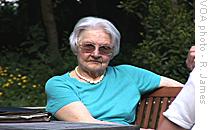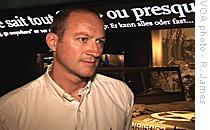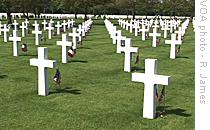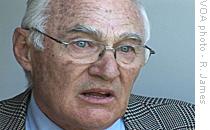Ste. Mere Eglise, Normandy, France
02 June 2009
On June 6, 1944 over 150,000 Allied troops landed on the beaches of Normandy, in northern France, in a push to liberate Europe from Hitler's Nazi forces. Now, 65 years later, the memories of that day linger along that windswept coast and its quiet villages.
Stretches of broad, sandy beach form much of this coastline in northern France. It is a good place to walk and think.
But, on June 6, 1944, it was not so. American, British and Canadian troops and French commandos stormed these beaches from their landing craft. They ran, crawled and fought their way through German gunfire from above the beaches.
This was "Operation Overlord," commonly known as D-Day.
Now 65 years later many in the villages here, such as Ste. Mere Eglise, remember.
 |
| Cecile Gancel |
 |
| Suzanne Duchemin |
Duchemin was in her early 20s when she saw the Americans in her back garden.
 |
| Leon Gaultier |
The Allied operation took place on beaches all along the Normandy coast. Over 150,000 Americans, Canadians, Britons and French came ashore here. Another 20,000 Americans parachuted behind enemy lines.
 |
| Stephane Simmonet |
In the months after D-Day came the liberation of Paris, the push across the Rhine River into Germany and onward. It would be another year before the war in Europe was finally over.
 |
| American Cemetary in Colleville-sur-Mer, France |
In the nearby German war cemetery in La Cambe lie nearly 20,000 German soldiers.
More than 425,000 Allied and German soldiers were killed, wounded or missing in action during the fighting in Normandy.
Thousands of French civilians were also killed, mainly in Allied bombings.
 |
| Henri Jean Renaud |
In the end, he says this led to reconciliation among the peoples of Europe and to the peace Europe enjoys today.
Every year, Allied leaders come here to commemorate the events of 1944 and the liberation of Europe. This year is no different.